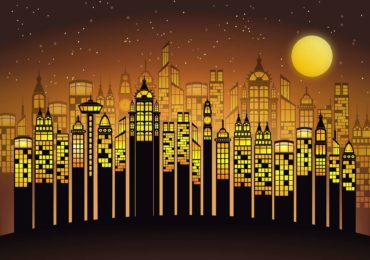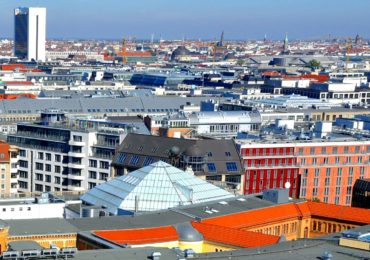The article on the city of Berlin is based on Samuel P. Huntington`s ‘The Clash of Civilization and Rethinking of World Order’. It theorizes cyclic process through which paradigms forms and re-forms. This is reflected in the transformations of physical environment and the philosophical basis of a generation. Based on this reading I have identified the significant stages and movements through which city of Berlin has formed and transformed. It traces the regeneration processes, its catalysts and manifestations (ranging from art, architecture, city structure, language, socio-economic-politico structure, et al). It can be considered as the diagnoses of Berlin’s transformation through changing in the World Order.

Transformation and changes are vital for survival, with the evolution of mankind almost everything associated with humans underwent changes. Cities are some of the most lively & studied examples to understand these changes. Civilizations all around the world has some peculiar features about them. Time period, technological inputs, resources play the important role in how cities grow and tackle changes.
Berlin was founded in the 13th century, and later became the capital of the small country of Prussia.
Prussia grew rapidly in the 18th and 19th century, and formed the basis of the German Empire in 1871. After 1900 Berlin became a major world city, known for its leadership roles in science, the humanities, music, museums, higher education, government, diplomacy and military affairs.
The unification of Germany started taking place in the 19th century. This was the time when things like art, architecture and cinema started creating huge impacts on the city of Berlin. These things shaped the culture and roots of the Berlin we see today.in the early 1900’s, Berlin was home to mainly gypsies, nomads, Jews, Christians. Muslims being the traders and merchants played a major role back then in shaping the economy of Berlin.

Berlin became the centre to handle the expansion of the German empire. Several colonies were set up in Africa. After Germany got defeated by the allies of US, UK, Russia and France the significance of Berlin as an economic and power centre reduced.
Again some major changes took place in Berlin’s culture and living style. Samuel Huntington clearly stated in his book ‘the clash of civilizations’ that the diversity in different cultures could one day be a major cause of war. Now with the creation of Weimar republic, the rise of Nazis took place. The great depression hit Germany hard in the time period of 1929-1932, increasing the rate of unemployment up to 30%.Support for the Nazi and Communist parties started growing during this time period.
The real differences and exclusions were created within the people of Berlin when Adolf Hitler became the chancellor. All of the people of some castes(mainly Jews) were isolated from the rest of the people. Huntington raised an argument about the potential of trade in European countries. He stated that “Asian values are universal values whereas European values are just European values”. Most Arab and other Asian countries do not change their cultural practices with time, these nations always ensure that even the slightest change in other places around the world do not let them affect their lifestyle. If at all, any such changes have the potential to create the slightest difference in the mindsets of the civilians of a country, the administration of the country will immediately take the required steps to stop the spread of that idea.

Whereas, on the other hand, western culture welcomes any new transformations and is not very much critical of change. One of the common links between Berlin and the Middle Eastern territories is that they both follow the cleft system. Both of these have people following more than one religion. Roman Catholics, Muslims, Christians and majorly the Evangelical Church in Germany (EKD) are the various religions that have been spread in Berlin with the span of time. Huntington writes about the dangers of growing cooperation amongst Iran, China, Pakistan and Kazakhstan resulting in an informal Confucian-Islamist alliance. He notices convergence between Latin American and Western civilisations, which I do not think is very much surprising since I do not see much distinction between them anyway. Conversely he sees Africa as moving away from the West .But, Germany on the other hand has never been interested in forming coalitions. It has formed solitary strategies and always looked to solve issues by using the resources within the nation.
Author Bio: Samreen is a graduate in Architecture from F/O Architecture & Ekistics ,Jamia Millia Islamia.Currently pursuing M.Arch (Urban Regeneration) from Jamia.She worked as an Assistant Field Investigator at the Slum Rehab Dept of DUSIB-Delhi Urban Shelter Improvement Board.(Govt. of NCT of Delhi)
References:
1.The Clash of Civilization and Rethinking of World Order- By Samuel Huntington’s
2.http://www.history.com/this-day-in-history/berlin-is-divided-video by This day in History
3.https://www.berlin.de/berlin-im-ueberblick/en/history/-Berlin.de